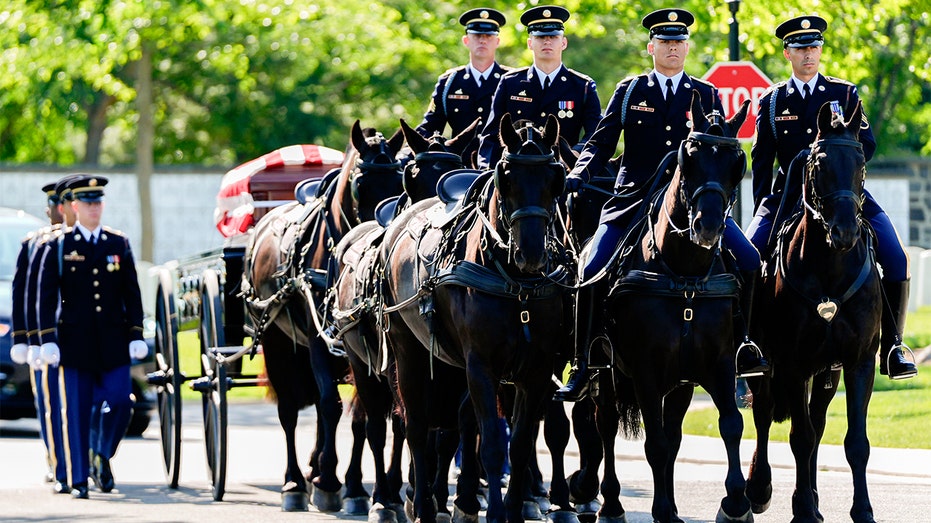Army Revives Historic Horse-Drawn Funeral Tradition After $28M Overhaul Following Two-Year Hiatus
U.S. Army's Caisson Detachment Returns to Arlington After Two-Year Pause, Honoring Veterans with Ceremonial Tribute

The U.S. Army’s Caisson Detachment made a poignant return to Arlington National Cemetery this week, marking its first appearance at the hallowed grounds in two years. The unit, renowned for its solemn role of transporting the remains of fallen service members to their final resting places, resumed its duties by escorting the casket of Private Bernard Curran, a World War II soldier whose journey home was decades in the making. Curran’s remains, having been identified last year after lying in a Philippine grave since 1942, were finally brought back to American soil for a burial steeped in military tradition.
This ceremony also symbolized a new chapter for the Caisson Detachment, whose operations had been suspended following alarming revelations about the welfare of its horses. In 2022, the deaths of two ceremonial horses within a four-day span triggered a comprehensive investigation into their living conditions. The Army found significant lapses in care, including poor-quality feed, inadequate stabling, and unsanitary environments—culminating in grave health issues for the horses tasked with carrying out these time-honored duties. Secretary of the Army Daniel Driscoll acknowledged the shortcomings, emphasizing that the storied unit’s problems resulted from “decades of under-investment.”
Major General Trevor Bredenkamp, who assumed leadership after the Caisson program was halted, oversaw a sweeping overhaul of the operation. “We had to rehabilitate many of our horses and what we found is years of underinvestment,” he noted. Many of the horses had suffered irreparable injuries, leading to necessary retirements and an urgent campaign to find healthy replacements. Critical improvements included the installation of rubber matting in stalls to prevent ingestion of gravel, elevating feed off the ground, and introducing rigorous healthcare routines. These changes came alongside the Army’s commitment of $28 million over the past two years to restore the unit and ensure the horses’ well-being.
With new protocols in place, the unit also recruited civilian horse trainers and secured leadership with veterinary expertise. Lieutenant Colonel Jason Crawford, an experienced rider and Army veterinarian, now commands the detachment. He highlighted the ongoing focus on the horses’ health—including regular dental care and individualized attention to their physical condition. “We've now had civilian trainers on our squads...as well as within our leadership,” said Crawford, underscoring the importance of specialized oversight in preserving both the horses and the traditions they uphold.
The horses themselves undergo careful selection, needing the strength and temperament to perform up to two funerals a day, ten per week, traversing the hard surfaces of Arlington Cemetery. Their role requires more than physical prowess; it demands a temperament suited for somber, high-pressure ceremonies that honor America’s military dead. “It takes a special horse to complete the mission of escorting America’s heroes to their final resting place,” Crawford remarked.
Now, as the Caisson Detachment resumes its ceremonial duties, both Army leaders and families of the fallen express hope and relief that this cherished tribute can continue with renewed excellence. “Though this horse cannot speak, I think it would say that it is living one of the best lives of any horse in our country,” Driscoll affirmed. For Major General Bredenkamp, the return of the unit is an unmistakable emblem of national respect: “It is a visible reminder of the solemnity of service...a visible symbol of American resolve and honor.”




